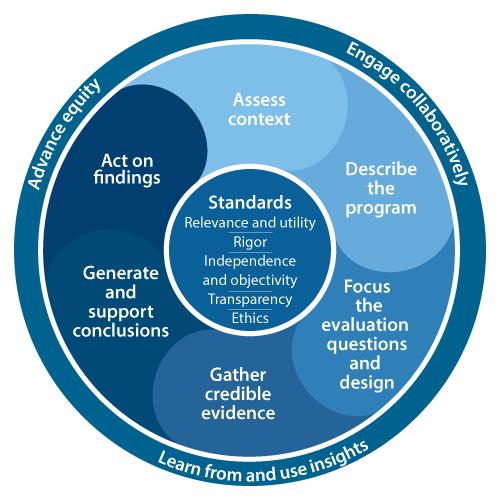At a glance
Tuberculosis (TB) programs can use program evaluation to inform program activities and drive continuous program improvement. CDC provides helpful resources for programs to use for performance monitoring and evaluation.

Tuberculosis (TB) programs can use program evaluation to inform program activities and drive continuous program improvement. CDC provides helpful resources for programs to use for performance monitoring and evaluation.
Getting Started
Program evaluation activities are most effective when implemented throughout the course of the program. By continually planning for, implementing, and refining the steps in your evaluation process, you are laying the groundwork for informed decision making, effective collaboration, and continuous quality improvement.
Evaluations can be as different as the programs being evaluated. Evaluators work closely with their program leadership, program staff, and other interest holders, to decide how complex an evaluation needs to be. Starting small is often a good idea, and you probably already have valuable information you can use in your evaluation.
Program evaluation reveals how effectively you are using your resources and attributing to achieving outcomes. It also allows your program to determine the next course of action and showcase your program's success.

TB Program Evaluation Tools
CDC has tools to assist TB programs in evaluation planning and implementation. These tools expand on CDC's Evaluation Framework with examples relevant to TB programs.










